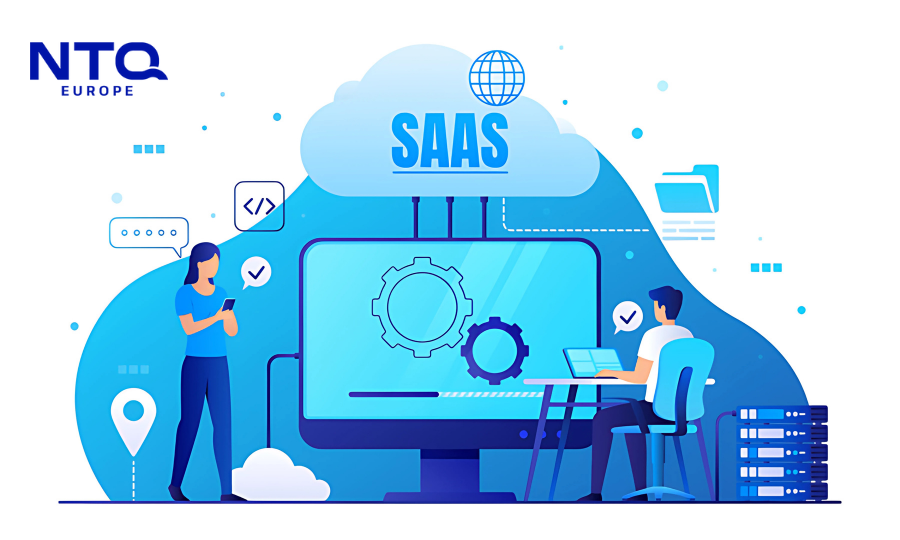What is an MVP (Minimum Viable Product) and Why It Matters
What is MVP Software Development?
A Minimum Viable Product (MVP), or MVP in product development, is the release or the simplest version of a new product that is used to validate the customer needs and requirements before building a fully featured product. The primary goal of an MVP, especially custom MVP development, is to quickly validate a product idea and learn from users before investing heavily in a fully-fledged product as it helps reduce risks significantly.

MVP development prevents your business from overbuilding and wasting resources on features users may never use.
Why MVP Development is Critical in Modern Software and IT Services
Using traditional software development might cause high risks for companies as they spend a significant amount of time and budget on building a complete product only to find out it doesn’t meet the needs or demands of users. That makes an MVP a strategic approach for businesses before investing in a new idea, especially MVP development for startups, since it only focuses on essential features first.
By focusing only on the core features first, MVP development can help companies save up to 60% on initial development costs while speeding up time-to-market, supporting your business in testing your idea with real users in real-world conditions. Therefore, instead of guessing what people want, you get actual feedback to shape your next steps, building products that truly meet market needs without breaking the budget.
MVP vs. PoC vs. Prototype: What’s the Difference?
While MVP, PoC, and Prototype serve to reduce risk and guide product strategy, their purposes, scope, and outputs differ significantly:
| Concept | Purpose | Focus | Best For | Output |
| Proof of Concept (PoC) | Prove technical feasibility | Technology & core logic | Tech startups testing new innovations, enterprises evaluating internal tools | One-off test or demo of feasibility |
| Prototype | Visualize design & user flow | UI/UX & product interaction | Early-stage ideation, UX research, stakeholder buy-in | Clickable or visual mockup (non-functional) |
| MVP | Test user adoption & market fit | Core features & functionality | Startups launching products, enterprises validating ideas in market | Fully functional product with minimal features |

The MVP development cost is a key factor that makes it a must-have step in the product development process, saving up to 60% in initial costs
Key Benefits of MVP Development for Business Success
Whether you’re a startup testing a new idea or an established enterprise exploring product diversification, MVP development offers a clear path for achieving product-market fit with minimized risk.
Validate Business Ideas Early with Minimal Investment
One of the most critical benefits of MVP development is the ability to test your idea in the real market without fully committing to large-scale development. By releasing a version with just the core features, you can gauge user interest, validate assumptions, and determine whether the problem you’re solving truly resonates with your target audience. This reduces the risk of building a product no one wants – and saves both time and capital.
Startups using MVPs can save up to 60% in initial development costs while gaining valuable user insights before scaling.
Reduce Development Costs and Time to Market
Instead of investing months or years in building a full-featured product that may miss the mark, MVPs allow businesses to launch a functional product quickly and cost-effectively. The lean, iterative process shortens the product development cycle, enabling faster releases and quicker market entry – a crucial advantage in today’s competitive digital landscape.
Companies that adopt MVP development often reduce their time-to-market by 40–60%, gaining first-mover advantage in new markets.
Attract Investors and Early Adopters
Custom MVP software development or MVP app development gives potential investors something tangible to engage with, showing them that the concept is not only technically feasible but is already generating interest and feedback from early users. Instead of relying solely on a business plan or pitch, an MVP allows teams to demonstrate real-world progress, which builds trust and improves chances of funding. It also helps attract early adopters who provide critical insights and can become long-term advocates for the product. For startups, especially, a well-developed MVP lays the groundwork for smarter decisions, better market fit, and long-term growth.
Gather Real User Feedback to Guide Product Evolution
MVPs empower businesses to collect feedback from real users in real time, offering insight into what features users actually want. This user-centric approach means you’re building a product with your customers, not just for them. It leads to smarter prioritization of future features, better UX decisions, and a more refined product with each iteration.
Data-driven iteration based on MVP feedback leads to products that better meet user needs and perform stronger in the market.
Support Agile Product Development and Scalability
MVP development aligns perfectly with Agile methodologies, supporting continuous development, frequent iterations, and fast pivots when needed. This flexibility allows your team to adapt to market changes or user expectations quickly, building a product that evolves in real-time.
The MVP framework supports scalable architecture, helping teams grow product functionality step-by-step while maintaining technical and business agility.

The process of an MVP development includes five main steps
How the MVP Development Process Works
The process of an MVP development includes five main steps as follows:
Phase 1: Researching Market and Defining Core Feature
This step focuses on the problem you’re trying to solve with your new product idea to understand it thoroughly. It helps you identify your target customers and analyze your competitors to see if your idea is worth pursuing, laying a strong foundation for your MVP to truly address users’ needs.
Phase 2: Planning and Technology Selection
In this phase, you need to define the MVP product development graphic with technical requirements to choose the right tech stack that aligns with your goals, timeline, and budget. This is to ensure a smooth development process and avoid any unexpected costs or delays. Making the right technology decisions at this stage will support future scalability. If you face challenges in identifying an appropriate tech stack, finding an MVP development company or agency to help you navigate.
Phase 3: Developing an MVP with Agile Methodology
This is where your product begins to take real shape with the focus being on building only the core features that deliver value early. Remember applying Agile methodology to ensure that your team stays adaptable, which means ready to respond quickly to user feedback or shifts in the market. The goal is to create a working MVP that’s functional, testable, and ready for real user engagement.
Phase 4: Testing, Getting Feedback, and Optimizing the Product
Before releasing the MVP to users, it’s essential to run thorough testing to ensure reliability and performance. Once launched, actively collect feedback from early adopters to validate your ideas, uncover usability issues, and steer clear of unnecessary features. This phase provides valuable insight into what resonates with users, helping you fine-tune the product and build a stronger version that truly meets market needs.
Phase 5: Iteration, Scaling, or Pivoting
Based on the feedback and performance data, this step is to decide whether to refine, scale, or pivot your product, ensuring your product evolves in the right direction and maximizes the return on your initial MVP investment. The expected outcome of this step is a roadmap for full product development or improvement, with reduced uncertainty and higher chances of product-market fit.

Understanding MVP development challenges will help your business avoid costly mistakes and optimize resources when building a product
Overcoming MVP Development Challenges: Turning Obstacles into Opportunities
Understanding MVP development challenges during the research & conceptualization process will help you avoid costly mistakes and optimize resources when building a product.
| Challenge | Why It’s a Problem | How to Overcome It |
| Defining the Right Core Features without Making MVP Overload | Add too many features to an MVP can slow things down and make it harder to see what users actually care about. | Use simple prioritization methods, focus on real user needs, and get help from MVP experts to shape and test what matters most. |
| Ensuring Good User Experience from The First Version | Poor user experience can turn people off fast, making it hard to prove your product has real value. | Bring UX/UI designers in early, test with real users, and focus on making it easy to use. |
| Transitioning from MVP to Full Product | Without a clear plan to grow, teams can lose steam after launch or end up adding features users don’t actually want. | Track how your MVP performs, use tech that can grow with you, and shape your next steps based on user feedback. Work with trusted partners who support you from start to finish. |
Why NTQ Europe Is the Strategic MVP Development Partner You Can Trust

NTQ Europe stands apart as a product-minded, innovation-driven MVP development company trusted by startups and global enterprises alike
What Makes Us Different?
-
Product-Driven, Not Just Project-Driven
-
Fast, Flexible, and Focused Execution
-
Scalable MVP-to-Product Roadmap
-
Domain Expertise That Accelerates Delivery
-
Security, Compliance, and Quality – Built In
-
One Partner for MVP and Beyond
Proven Results: MVP Case Study
- Secure €1.5M in seed funding
- Onboard three enterprise clients during beta
- Reduce projected development cost by 35% through early user validation
Start Smart with MVP Development
The global trend toward lean, agile product development continues to accelerate, with more businesses adopting MVP-first strategies to stay competitive, attract early users, and impress investors. According to CB Insights, 42% of startups fail due to a lack of market need, making an MVP your best defense against becoming part of that statistic.
Looking to turn your product idea into reality – without wasting time or money? Partner with NTQ Europe, your trusted MVP development company, to validate faster, build smarter, and grow stronger from day one.



















